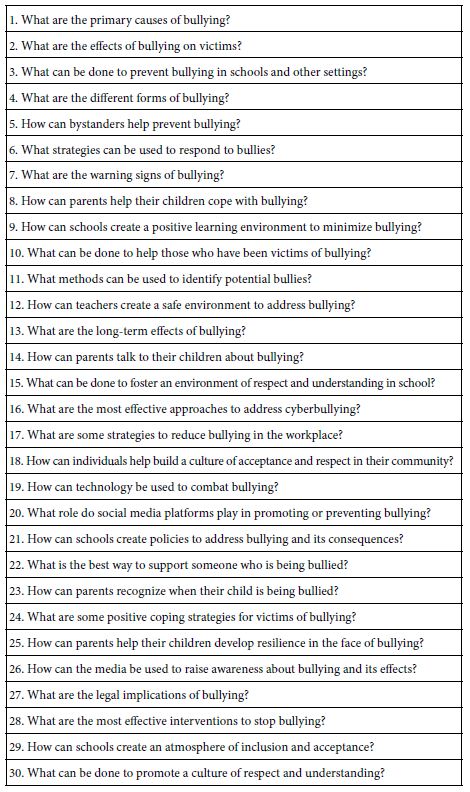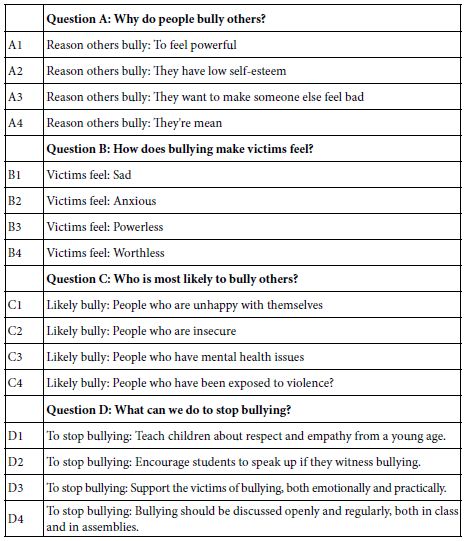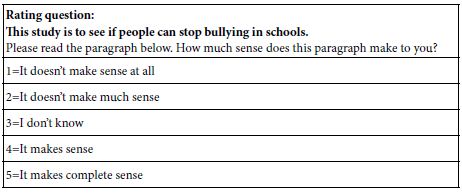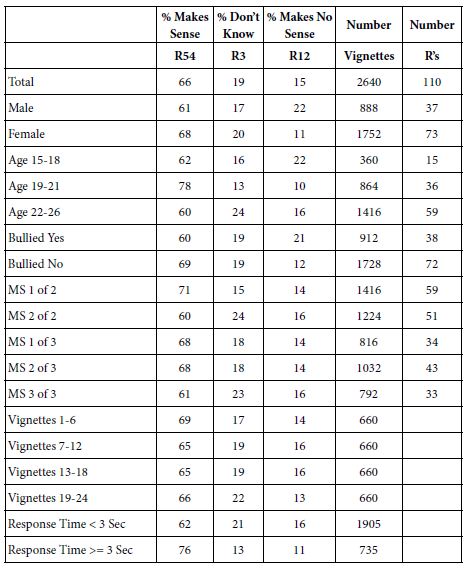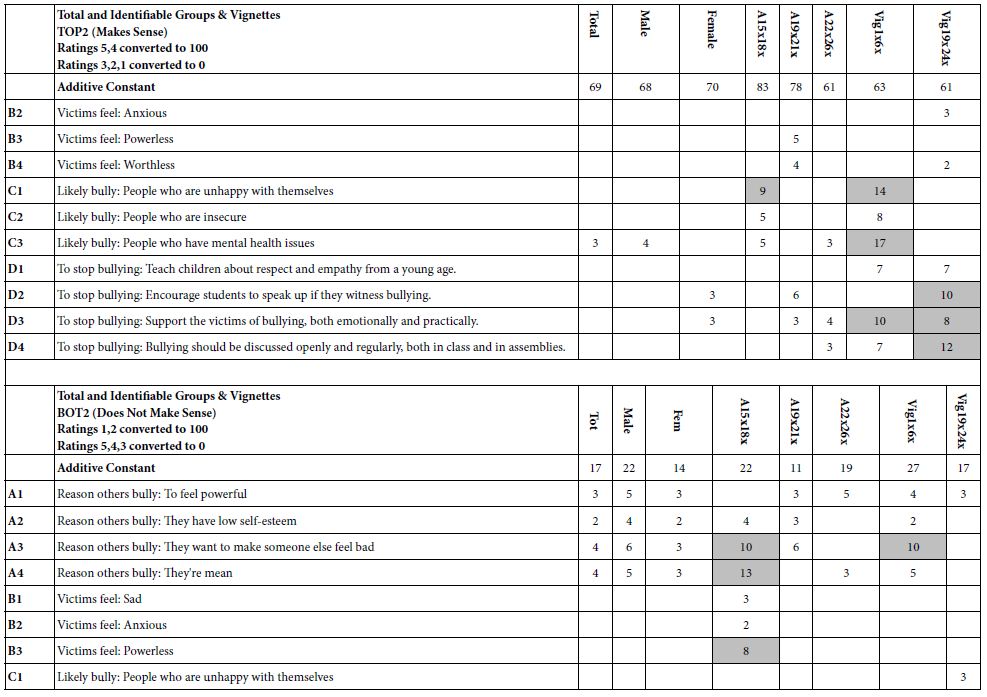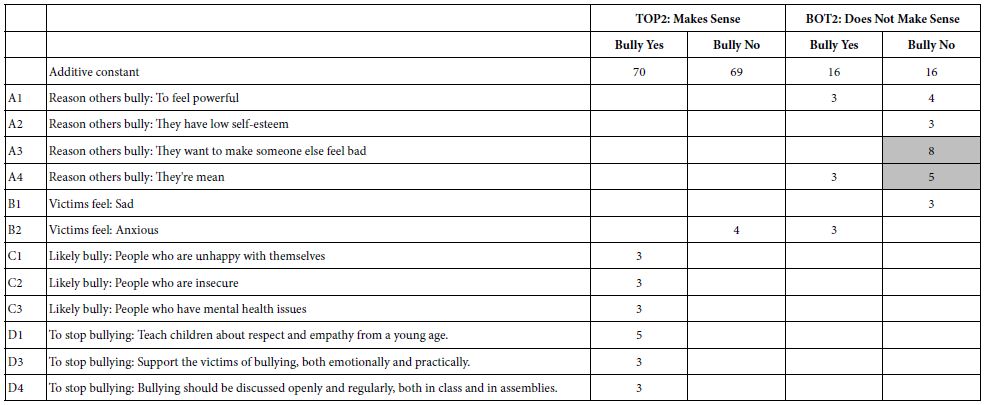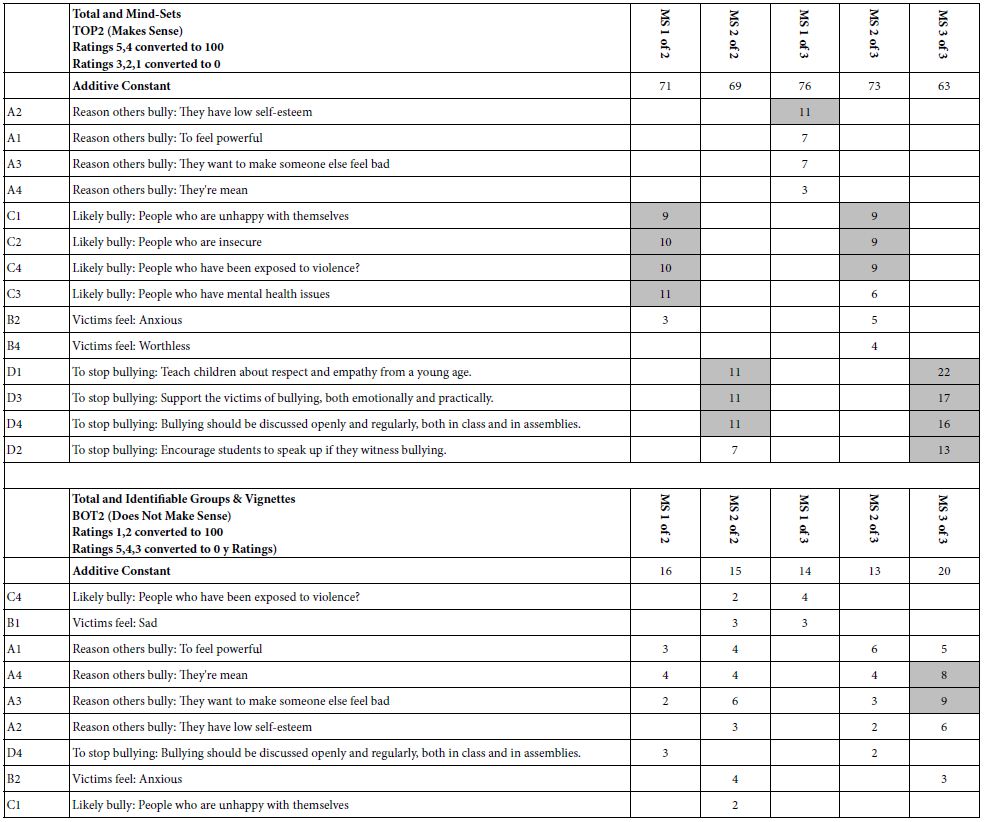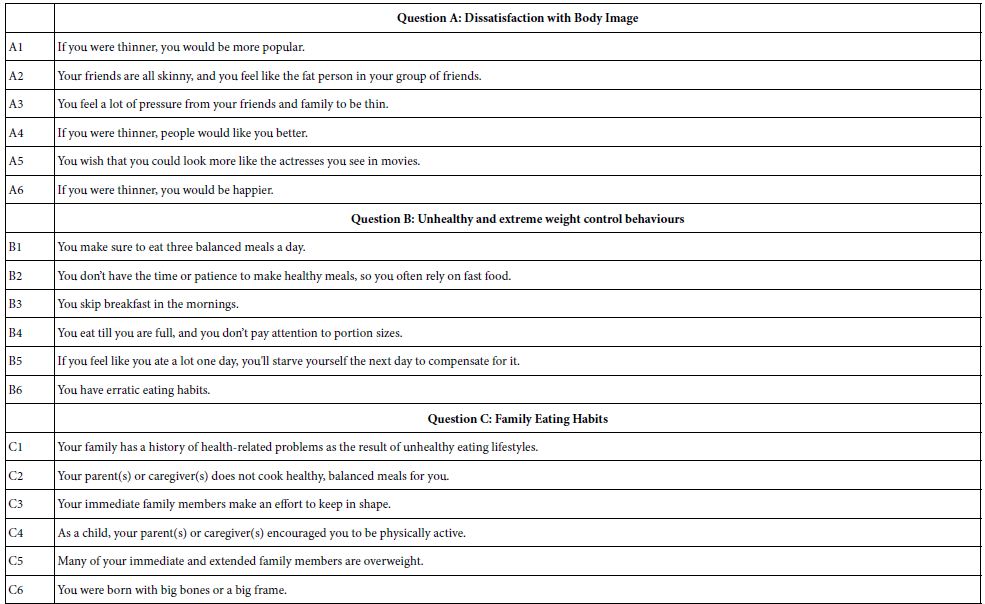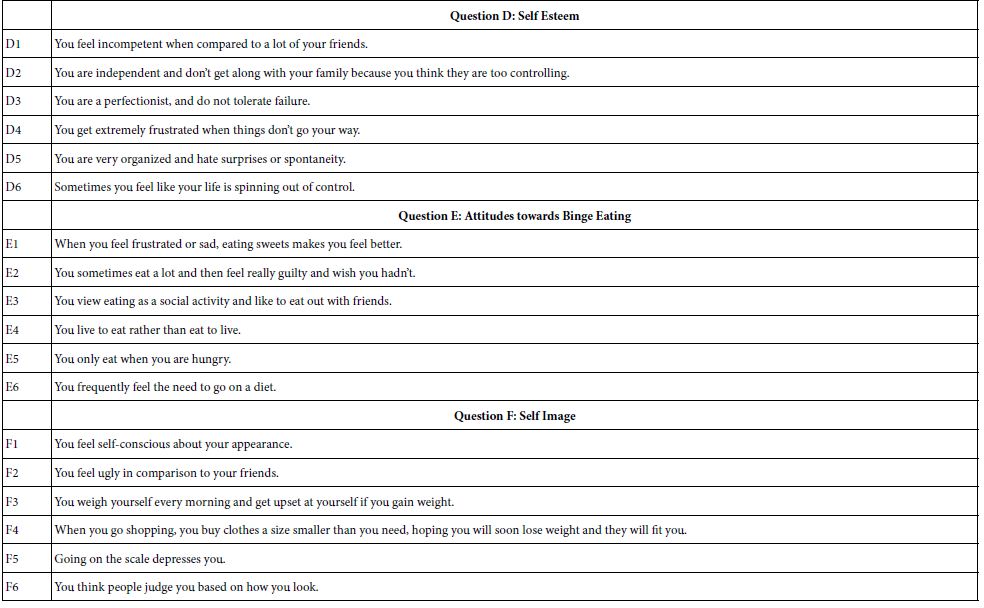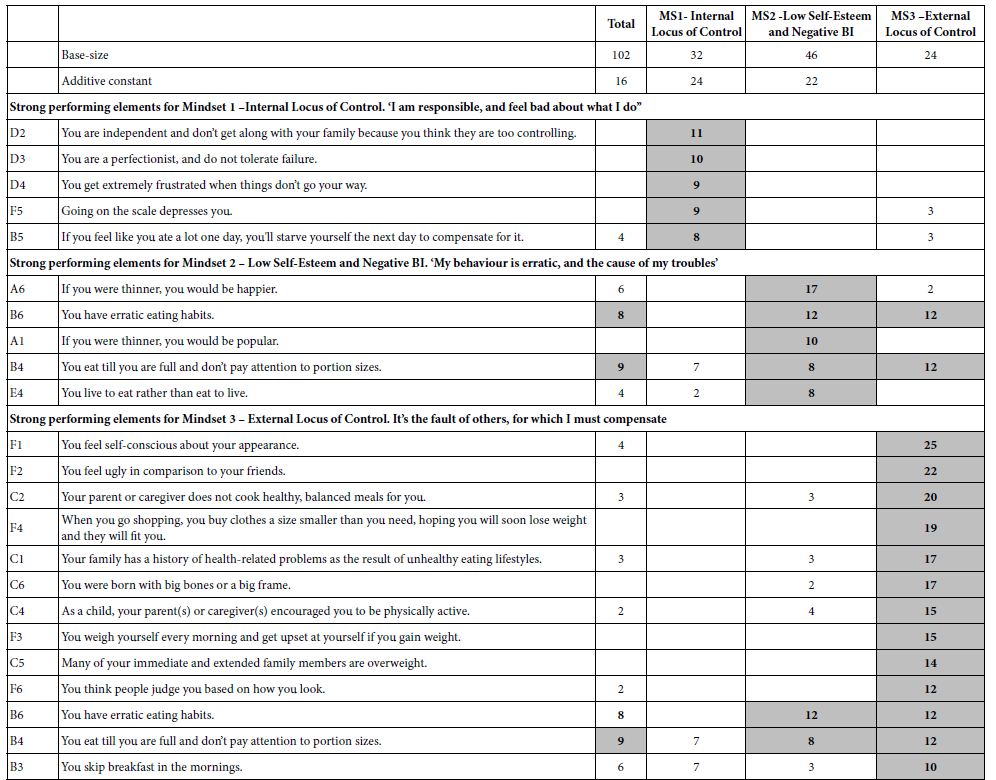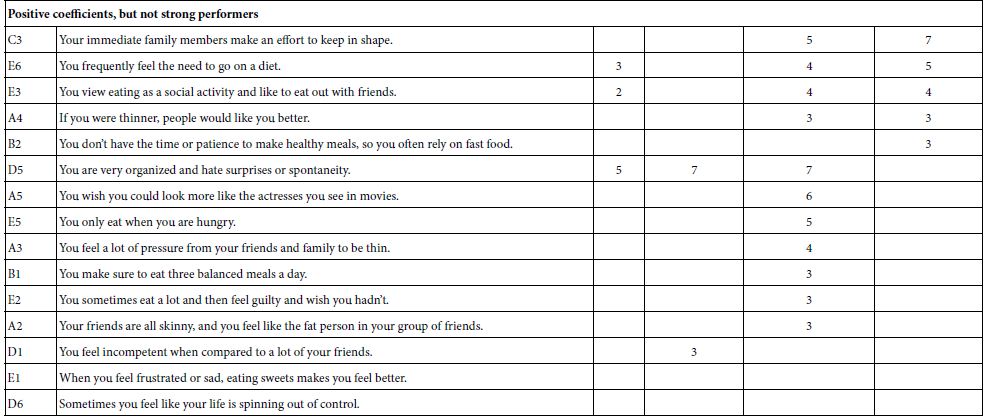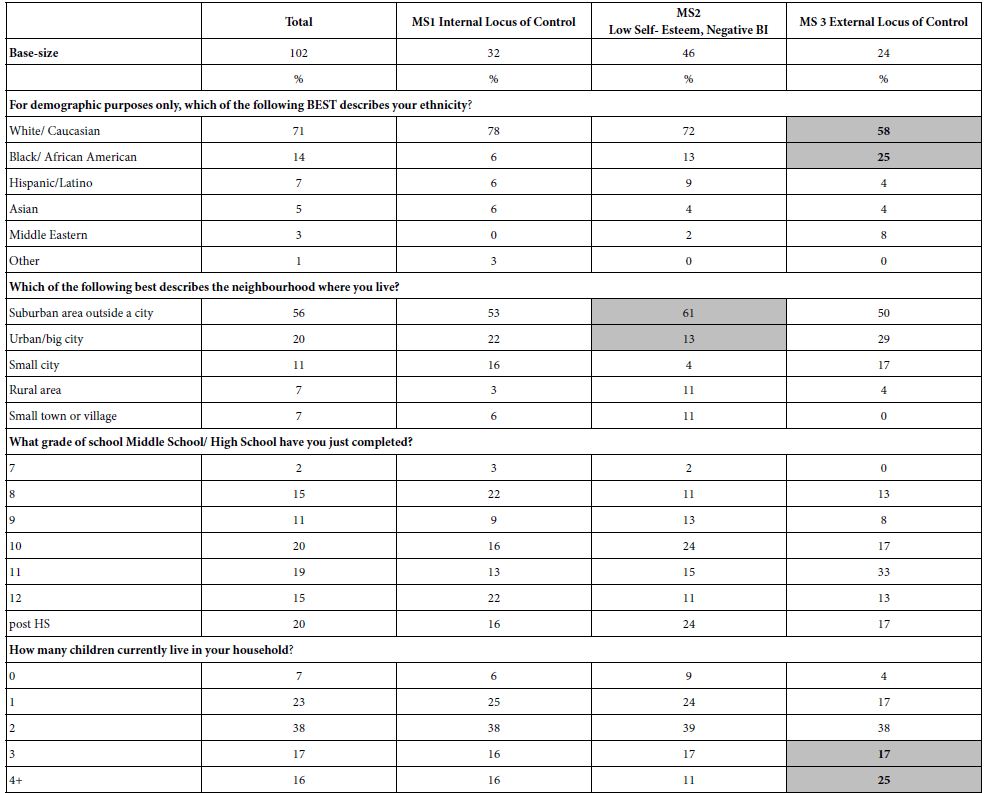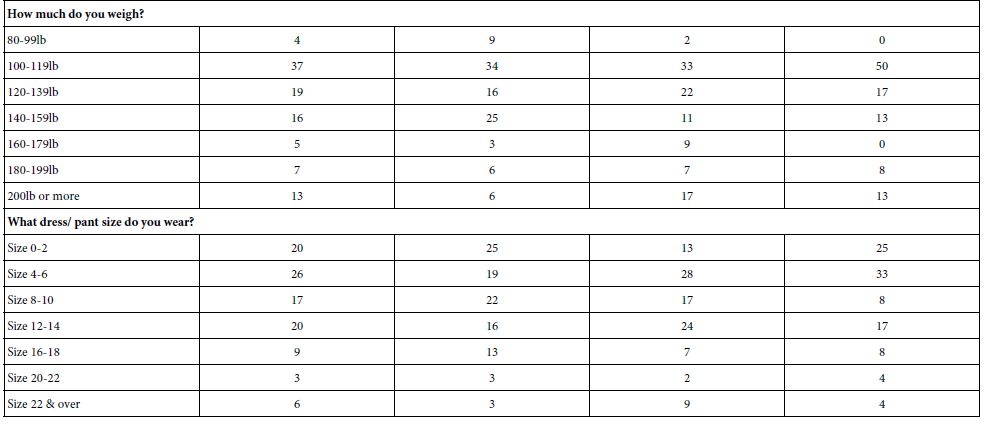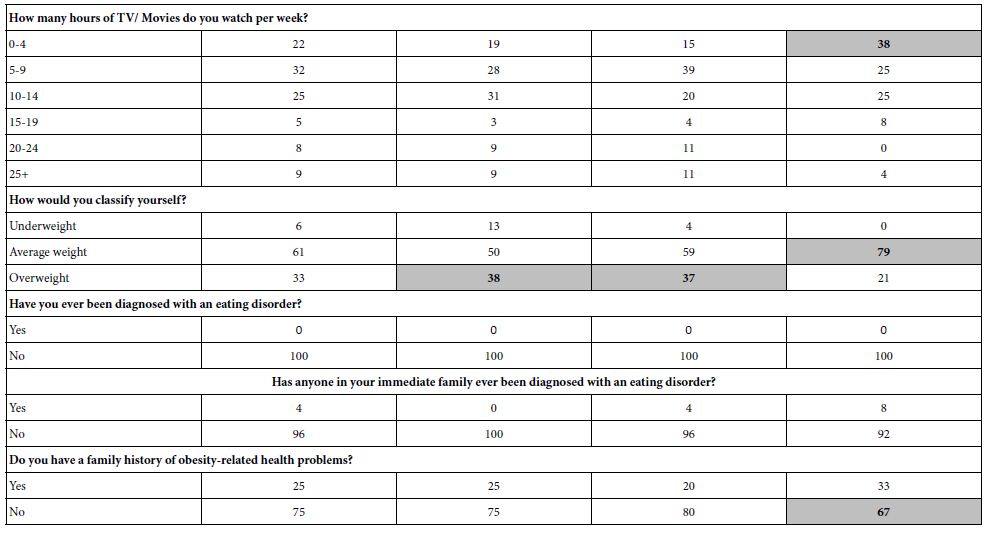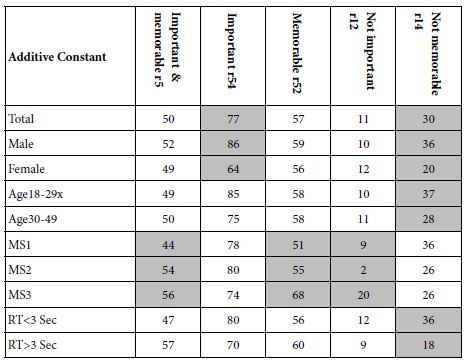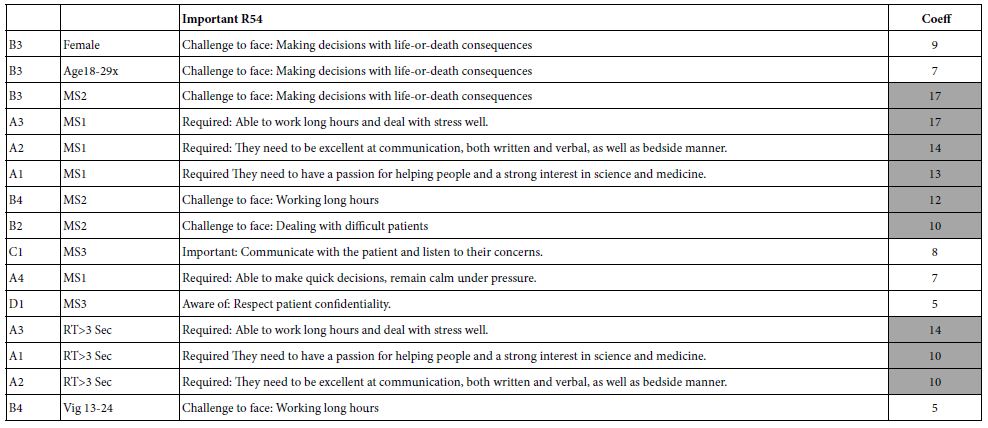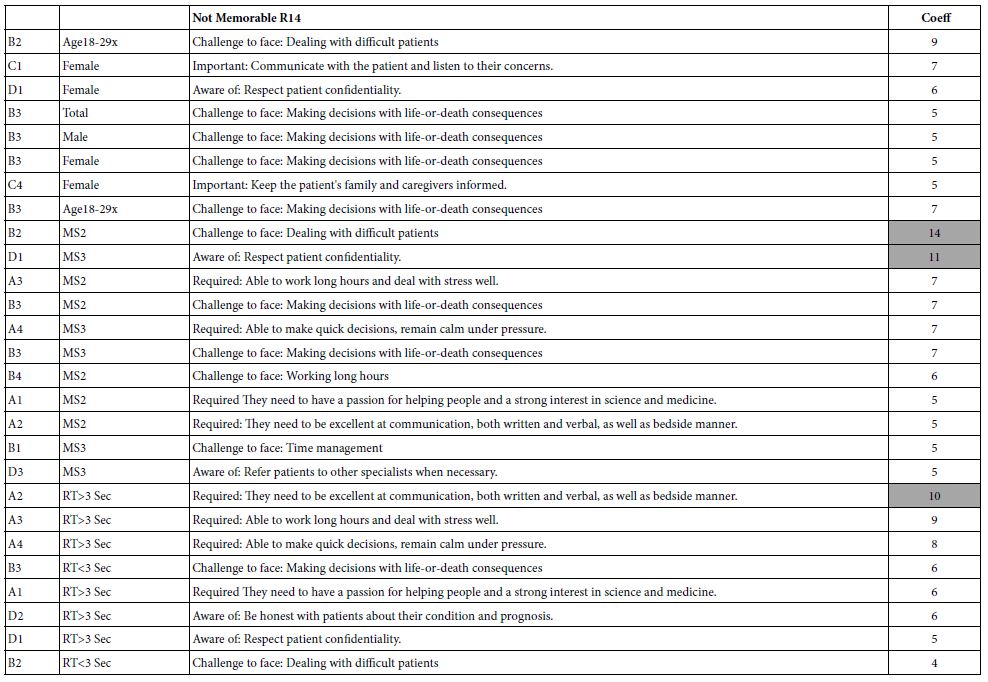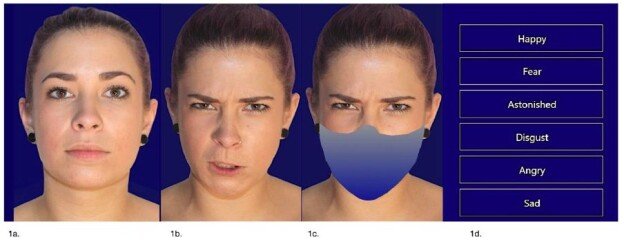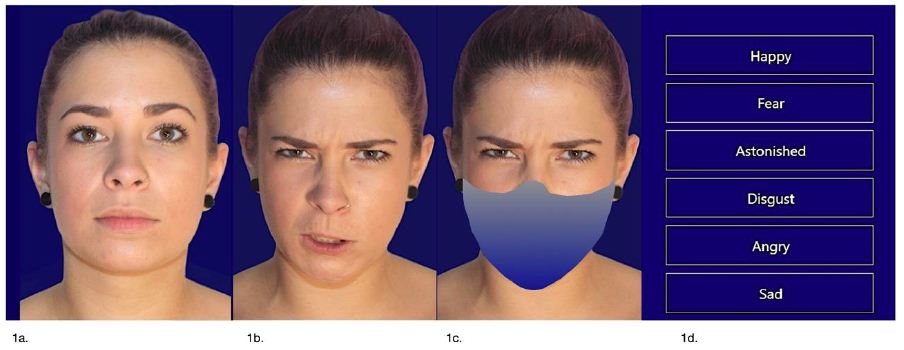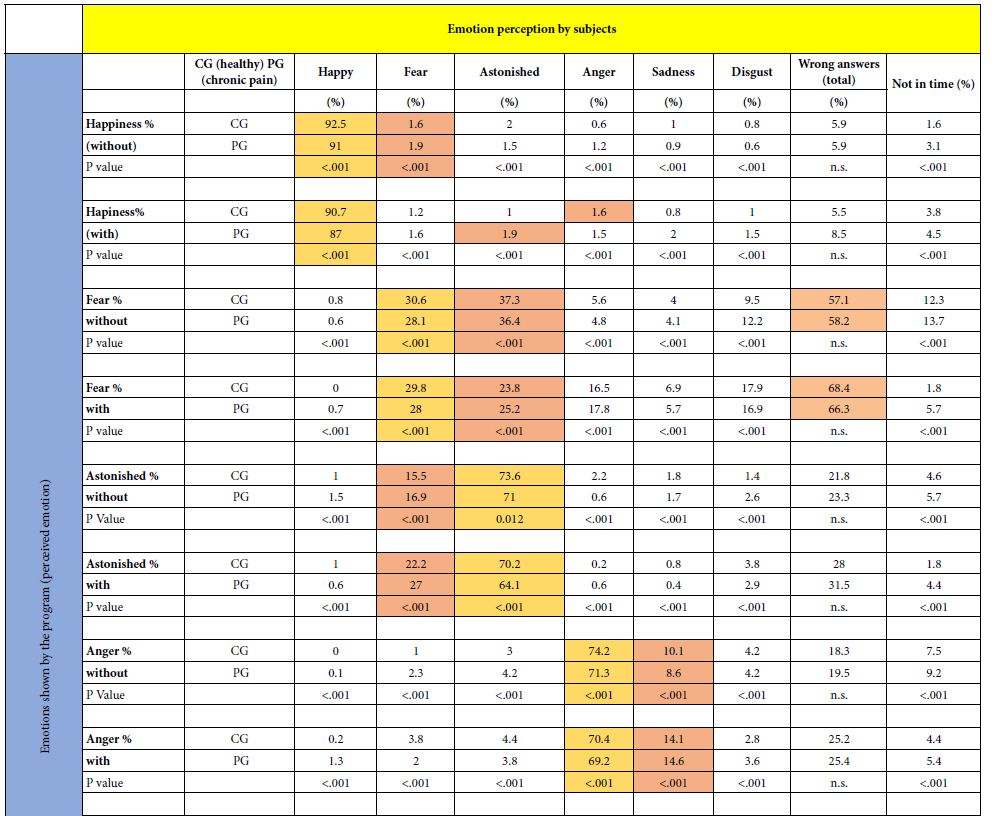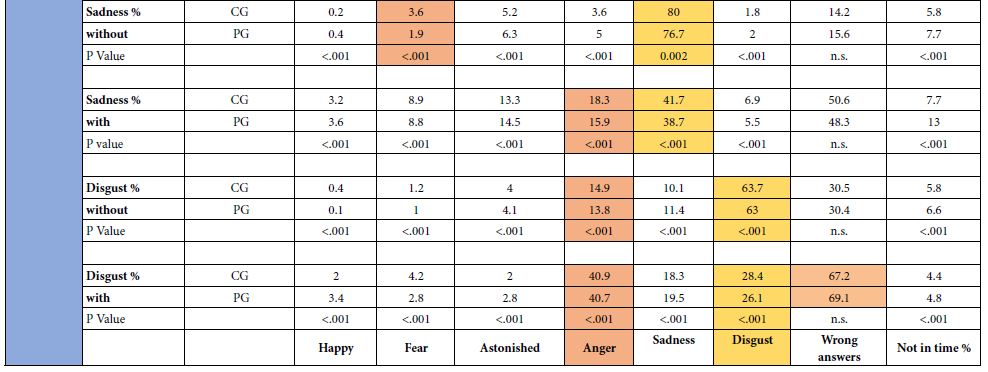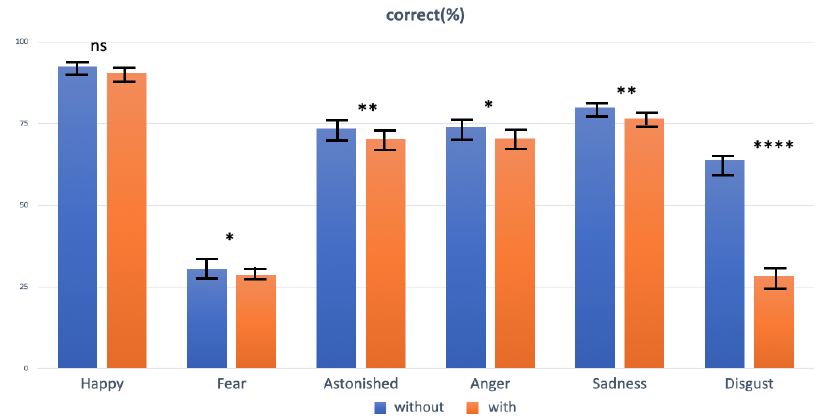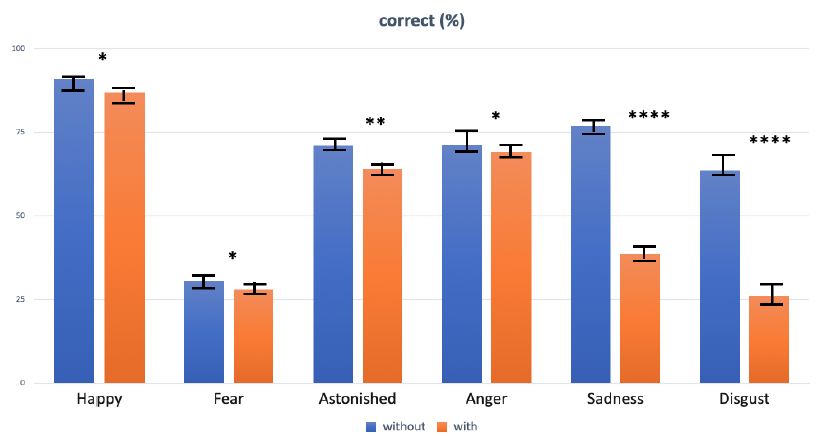DOI: 10.31038/PSYJ.2023514
Abstract
The presence of a study poses the problem of the subjectivation of body image disorders in adolescents addicted to psychoactive substances. We start from a clinical observation of schooled Cameroonian adolescents who develop a symptomatology of body image disorders in a sense that is strongly colored by mystical-cultural elements. However, until now, the analysis of the subjectivation of these phenomena has not really been taken into account in the psychoanalytical or phenomenological literature. Based on the theory of cultural relativism of Sow, in particular the theory of conflict relations, we sought to understand the role of cultural signifiers in the process of subjectivation of these disorders when we are under the influence of these substances. To this end, data were collected from three participants or cases, through semi-structured interviews and the DAST-20 test. The results were interpreted in the light of the conflict relationship theory of Sow [1]. It shows that body image disorders are dependent on the breakdown of relational networks, in particular the conflict between the adolescent and the Enemy (witch doctor, sorcerer); the disintegration of his relation to the Ancestor; of the relational rupture between his bio-lineage Family and the Ancestor. The clinical indications of these disorders testify to the impairment of the body, the vital and spiritual principles of the adolescent addict. This implies the objectification of ethno-clinical approaches in the process of detoxification and support for the weaning of addicts, especially school-going adolescents [2].
Keywords
Body image disorders, Teenager, Cultural signifiers, Subjectification, Psychoactive substances
Introduction
The contribution of cultural signifiers in the subjectivation of body image disorders is not taken into account in the scientific literature, in particular the psychoanalytical and phenomenological approaches with regard to their subjectivation of phenomena. Indeed, the image of the body has been theorized by several authors who decline it in several dimensions. Slade defines it as a multidimensional construct that includes two major dimensions, namely: a perceptual dimension and an attitudinal dimension. Price declines it in real body, in appearance body and in ideal body. Dolto speaks of the unconscious image of the body, which he subdivides into basic image, functional image and erogenous image. According to the literature, each of these components is likely to undergo distortions which inevitably modify the perception of the individual vis-à-vis his body, leading to bodily dissatisfaction that the DSM-5 retains in its definition of mental disorders. body image. They are also called body dysmorphia and classified in the nosographic category “obsessive-compulsive and related disorders” and is called “obsession with body dysmorphia” [3-6].
This bodily dissatisfaction is much more noticeable in anorexics, drug addicts and people with a disability or a significant physical condition. In anorexics, from an attitudinal point of view, in general, it is the thighs, hips and stomach that are perceived as having larger proportions than reality. From a perceptual point of view, body image disorder in anorexics is linked to negative judgments made about their own body. From this point of view, anorexics see themselves realistically but are extremely dissatisfied with their body image. The injection leads to a break in the skin for them while those who “sniff” it have perforated nasal septums. Drug addiction or intoxication can also lead to organic damage that alters the physical body with consequences for the subject’s body image and body self-image [7-11].
However, Dolto and Pireyre, starting from the psychoanalytical approach, underline the possibility for an individual who does not suffer from any physical ailment, to develop body image disorders. From the psychoanalytical point of view, the symptomatic elements of body image disorders such as feelings of omnipotence, invisibility, control or fragmentation, etc., refer to archaic bodily anxieties resulting from an absence of symbolization. In infants due to the fragility of the narcissistic foundations. These anxieties reappear in adolescence, which turns out to be an important triggering factor for previous frailties due to the profound changes in the real body of the adolescent resulting in significant psychological repercussions at the level of concrete, imaginary and symbolic reality [12].
At this delicate period of life, the recognition of bodily limits allows a stabilizing image and a protective envelope. Failing this, the adolescent starts looking for strong sensations which give him the impression of rediscovering this physical and psychic envelope, which is why he can feel beautiful, tall, strong, without an objective link with reality. Thus, among drug users, the fragility of the bodily envelope leads to a feeling of emptiness, the absence of bodily feelings, depersonalization, a feeling of fragmentation or of omnipotence [13,14].
These elements, which feed the clinical picture of body image disorders in drug addicts, were listed in the accounts of the three adolescents addicted to psychoactive substances who participated in this study. Their subjectivation of body image disorders that appear in their stories through the clinical indications mentioned above, departs from the psychoanalytical approach as far as the subjectivation of phenomena is concerned. These adolescents, in the sense that they themselves give from their own point of view, to the symptomatic elements of body image disorders that emerge from their discourse, evoke mystical-religious elements such as witchcraft, ancestors, the curse. These imaginary psychic productions highlight the three antithetical doublets of Ego (ancestors, sorcerers, witch doctors) that Sow sets up as interpretative registers in his theory of cultural relativism in general and particularly in his conflict relation theory, to account for the subjectivation of a situation by taking into account the cultural context in which it is inserted.
Thus, these elements of speech of adolescents translate their experience of consciousness in a strongly structured traditional universe which grants an important status to the imagination where hallucinatory images and mediumistic visions orchestrated by the absorption of psychoactive substances, are not only “thoughts more consistent than ordinary thoughts”, but also even more powerful means to access what is hidden but of high meaningful content. This articulation between individual imaginary productions and socio-cultural reality poses the psychism/culture relationship already mentioned by Freud, Roheim, Devereux and others. It is in this ethno-psychopathological perspective that the cultural relativism of Sow fits which, from the anthropological point of view, inscribes, like Hebga, the shadow which is one of the components of the person-personality, as a reliable anthropological foundation to account for the subjective experiences of subjects in relation to spiritual or psychic phenomena which are highlighted in this study, by the mediumistic and psychoanaleptic properties of drugs. In this perspective, the drug ceases to be considered as a simple object or a “fetish” object in the sense of Winnicott, to take on a mystical-religious connotation, since it is part of a pan-structured universe where everything is symbolic [15-18].
Thus, through its psychoanaleptic effects, the drug would act on the shadow to force a disembodiment or stimulate an apparent duplication in which emerge hallucinatory visions allowing the addicted subject to come into contact with cosmic entities, with the only difference that this contact is not facilitated by the state of sleep during which the shadow naturally leaves the body of the sleeper to temporarily join the World of the spirits, or that of the Ancestors, but is provoked by the uncontrolled and unsupervised taking psychoactive substances. It is then that the cultural signifiers inscribe the drug as the determinism of body image disorders, with regard to the syndromy that emerges from the discourse in a culturally symbolic way. Thus, the drug becoming an object of “bewitchment” or a “mediator” of sorcery acted by the deniers of Ego (witch doctors, sorcerers, ancestors), appears as disruptive of the social organization and inducing of psychopathological decompensation.
It is to articulate this link between the psychic productions of adolescents addicted to psychoactive substances and the realities of their socio-cultures that we pose the problem of this study from the cultural relativism of Sow, which is that of the role of signifiers in the process of subjectivation of body image disorders in Cameroonian teenagers addicted to SPAs. The objective of this study is to understand the role of cultural signifiers in the subjectivation of body image disorders in adolescents addicted to psychoactive substances. In order to better understand the psychic dynamics of adolescents, three sub-objectives have been formulated: (1) to understand the intentional action of witch doctors on the biophysiological vital principle leading to body image disorders in Cameroonian adolescents educated addict to psychoactive substances; (2) to understand the intentional action of sorcerers on the principle of life of the existing, leading to body image disorders in Cameroonian adolescents in school addicted to psychoactive substances; (3) understand the intentional action of the ancestors on the spiritual principle leading to body image disorders in Cameroonian teenagers addicted to psychoactive substances.
Method
This qualitative study is exploratory and is based on an ethno-psychopathological perspective. This approach was chosen given that the subjectivation of body image disorders in relation to socio-cultural organizers is an area of research that has not yet been explored. In this context, it is relevant to adopt an exploratory research approach in order to understand the phenomenon by collecting in-depth information on a limited number of participants. Furthermore, this study is one of the first qualitative studies to explore the subjective perspective of body image disorders in adolescents by calling on cultural signifiers. It aims to offer an initial description of these phenomena from the perspective of adolescents in conjunction with the socio-cultural context in which the phenomenon is inserted and gives it meaning. This study is part of an ethno-psychopathological perspective in the natural environment with three Cameroonian schoolchildren addicted to psychoactive substances. Its objective is to understand the role of cultural signifiers in the meaning that adolescents themselves give to the clinical indications of body image disorders that emerge from their discourse.
Participants
The participants of this research are made up of three Cameroonian schoolchildren addicted to psychoactive substances. To be selected, the participants of the study were subjected to the inclusion criteria and the non-inclusion criteria. As inclusion criteria, you had to be a teenager regularly enrolled in a school whose age varies between 11 and 25 years. By considering this age group, we subscribe to the definitional approach of Giedd [19], which extends the age of adolescence to 25 years following the results of research based on the analysis data obtained by magnetic resonance imaging (MRI) of many adolescent brains which show that it is at this age that the brain becomes mature; having been diagnosed as addicted to psychoactive substances or presenting an obvious problem according to the DAST-20 (Drug Abuse Screening Test) with a score ≥ 5. As criteria for non-inclusion, you had to have refused to sign the informed consent; interrupting interviews; being unable to continue the search; have scored ≤ 0 on the Problematic Teen Alcohol and Drug Use Screening Scale (DAST-20) of the body that emerges from their speech.
Material and Procedure
Participants were selected during psychiatric consultations. After a clinical interview and a syndromic record (based on the DSM-V), a diagnosis of addiction was made with the DAST-20 scale which evaluates the degree of severity of drug use ranging from 1 to 20. The score 1 to 5 indicates a low level of problems; a score of 6 to 10 indicates a possibly moderate level of problems; the score of 11 to 15 indicates a substantial level of problems; the score of 16 to 20 indicates the level of possibly severe problems. Adolescents with a score ≥ 5 were offered to take part in the study. Three were selected and agreed to participate in the study after reading the information leaflet and signing the informed consent. The selection procedure that we followed is the non-probability sampling method, which is an empirical method based on a well-considered choice of the selection of individuals by the researcher for the constitution of his sample. The interviews were guided by a grid including themes related to the research questions: 1) motivational factors related to the consumption of psychoactive substances; 2) body image disorders; 3) the psychic dynamics of cultural signifiers; 3) the cultural significance of body image disorders. This research project has been approved by the Ethics Committee for Research on Human Subjects of the Western Region (CERSH-OU) and the authorization to investigate issued by the healthcare firm Angel Gabriel of Bafoussam.
Analyses
We proceeded to a total transcription of the verbatim to not neglect any aspect mentioned by the participant. Afterwards, we proceeded to the coding of the interviews which will make it possible to deconstruct the texts by classifying the quotations by category and illustrating them with the descriptive elements of each person interviewed. Finally, we proceeded to the categorization which consisted in bringing together elements sharing common characteristics according to previously established criteria. The pre-existing categories are linked to the specific themes which relate to the main themes which are: the motivational factors linked to the consumption of psychoactive substances; body image disorders; the psychic dynamics of cultural signifiers; the cultural significance of body image disorders.
Results
The interview with case no. 1, whom we nicknamed “Gildas”, who is 22 years old, a student, single, lasted 27 minutes. He started using drugs when he was 17. Its polyconsumption includes drugs such as tramol, cannabis, alcohol, cigarettes and cocaine. The DAST-20 scale at Gildas showed a score of 16 points, which places him within a positivity threshold of 16 to 20 which reveals a possibly severe level of problems. The interview with case no. 2, whom we nicknamed “Stève”, who is 17 years old, a student, single, lasted 19 minutes. He started using drugs when he was 12 years old and in 6th grade. Its polyconsumption includes drugs such as cigarettes, taï, cannabis, tramol and “pebble”. Passing the DAST-20 scale gave Stève a score of 16 points, which places him within a positivity threshold of 16 to 20, which reveals a possibly severe level of problems. The interview with case no. 3, whom we nicknamed “Jonas”, who is 23 years old, a student, single, lasted 23 minutes. He started using drugs when he was 18. Its polyconsumption includes drugs such as cannabis, alcohol and cigarettes. His DAST-20 test score resulted in a DAST-20 test score of 11 points, which puts him within an 11 to 15 positivity threshold that reveals a possibly substantial level of problems. The analysis of the various speeches collected from each of the three participants confirms the presence of body image disorders which are expressed, among other things, in feelings of invisibility, invincibility, transparency, psycho-corporal emptiness, depersonalization, derealization., fragmentation, right of way or possession.
Depersonalization
Depersonalization is explained by the fact that the subject does not have the impression of being inside his body, nor of the world. The interface between the inside and the outside of the body is not delimited. She expresses herself in Gildas with words like: “It’s like an oppression (…) Once it’s the chest which seemed as if something moved inside… Afterwards you act as if you’re in the machine, as if you were in pieces. For Stève: “You feel as if someone is living in your body. For Jonas: “It makes us do things we didn’t expect, as if you were another person. “I thought I was above, so above that I turned into a glider”.
The Morsels
The morsels refer to the impression that his body is not unified. It is the effect of depersonalization that modifies the bodily experience leading to the subject, anxieties of fragmentation, bodily transformation, annihilation or division. Fragmentation becomes a disturbance of the image of the body insofar as the anxiety of fragmentation is a threat to the cohesion and continuity of the subject by breaking into pieces or bursting. Because of fragmentation, the individual cannot experience a stable identity. The subject is little differentiated from the object. It is translated by Stève in these terms: “I have the feeling that my body is divided into pieces. Bion (n.d.) quoted by Goyty [20] describes fragmentation anxiety as “emptying anxiety”. This feeling of emptying or psychocorporal emptiness is translated by Jonas when he says: “You no longer feel your body”.
The Derealization
Derealization is a state of consciousness or an altered perception or experience of reality that appears dissociated or external to oneself. Derealized people sometimes say that they feel unreal or like an automaton, with no control over what they do or say. This sense of derealization is evidenced in Gildas by lyrics like:
It’s as if I saw far from me. I also saw the little ones there, the guys were scaring me on the way. I even wanted to slap them… It’s as if you have to deal with the same person everywhere. When you talk to this one, he just laughs. Afterwards, you feel that it is not this one that speaks to me. You want to change, you feel it’s weird. Can you see a little?… Afterwards, you see, you have money easily (…) The eyes were turning as if it were going behind your head to get you to see things (…) Someone is telling you now, you mustn’t cheat on your wife, when you have a wife like that, like that. We finish talking to you, you leave. A woman comes out of nowhere and tells you she loves you. You are overwhelmed, you say shit to yourself. What is that.
For Jonas: “You do things without understanding…You have the impression of flying away, of speaking with spirits. For Stève: “It’s as if I was flying away. It feels like my feet weren’t touching the ground anymore.”
The Feeling of Being Under Control
Control or possession refers to the state of a person who is in the power of a demonic power. It can be done by bewitchment by means of objects or mediators such as food, animal vectors, instruments-amulets. This feeling of being under control is manifested in the subject by the impression that his body no longer belongs to him, that someone else is carrying his body or remotely guiding him. This feeling of being under control is translated in Stève by: “I tell myself that there is a spirit behind which controls me…I sometimes felt as if someone possessed my body. I do things without knowing and when I do, I find that what I did was not right. Right now, it’s not me who’s doing it.” For Gildas: “I have the impression that my body no longer belongs to me, that I do things as if someone was controlling me. Sometimes, in class, I heard a voice telling me “go out and have a smoke”. It was then that I left school to find myself in the neighborhood with friends. For Jonas: “Some say it’s bewitchment… As if a spirit was inhabiting you and pushing you to do things”
The Invincibility
Invincibility is expressed by the feeling of narcissistic omnipotence which gives the subject the impression of divinity. This feeling of omnipotence is expressed in Gildas by words like: “I could say that I cross the portal without the supervisor seeing me and I cross he does not see me…Even if there is a wizard in the neighborhood, I know that he cannot do anything to me because I am powerful”. For Jonas:
I felt invisible, super powerful. We believe we are capable of anything. When you take this, you change dimension. You think you are powerful. It puts you in a mind where you believe that you are capable of anything, that nothing can stop you. In my hallucinations, I saw life in a different way. I thought I was above, so above that I turned into a glider. I even had to forget who I personally was. I was like a god since I minimized or marginalized those around me.
Steve is of the same opinion when he says: “You are strong. You speak, everyone listens. You become like god”. The subjectivation of the participants in the study in relation to these different elements calls up the cultural signifiers available in the sociocultural field. This meaning given to the elements of body image disorders by adolescents addicted to psychoactive substances, will be apprehended from Sow’s theory of cultural relativism and in particular, his theory of relationship conflict.. Indeed, Sow postulates that all phenomena can only be understood in the socio-cultural context in which they emerge and which gives them meaning. It is in this perspective that he inscribes the mental disorder as the expression of a conflict between the individual and his relational poles, because in Africa, the sick subject is always the victim of an aggression external to him whose aggressor or denier of self or identity, can be the sorcerer, the witch doctor and the ancestor. In the context of this study, all these negative doublets of Ego use the culturally inscribed drug as a determinant of body image disorders because of its psychoanaleptic effects on the shadow or the ego of the subject who immerses his functionality in a hallucinatory dimension that is similar to psychic or paranormal phenomena that emerge from the discourse of study participants in a culturally symbolic way.
The Conflicting Relationship between the Ego and Sorcerers/witch Doctors
Sow thinks that mental disorder is “Ego ‘violated’ by the rupture, caused by an aggressive otherness, of one or other of its links, stemming from the fundamental constituent poles” (p.30). In this study, the first constituent pole is that of Ego and the sorcerer. All the participants in the study mention witchcraft as a possible explanation for the clinical indications of body image disorders that emerge from their speeches due to the mediumistic and psychoanaleptic properties of psychoactive substances. We can underline it in the student Jonas who says: “We say to ourselves that there is something behind. People of bad hearts, one mind. In the same perspective, Gildas affirms: “Sometimes they are said to have been sold into witchcraft or that they are driven by a spirit or by bad people. “For Stève:” But I think that this thing is not clear. There is something behind. Maybe witchcraft, spirits or an invisible hand”.
These different subjectifications of the elements of body image disorders given by the participants in the study, which underline the action of the horizontal antithetical doublet on Ego, highlight the importance of the etiology of the phenomena still considered in Africa as an indicator of disruption of social relations [21]. In the context of the study, the drug is not just a simple herb or profane object, but is considered a magic herb possessing powers which, however, are not innate to it, but are dependent on the antithetical doublets of ‘Ego who use it to reach their victims. This is noticeable in the account of study participants who speak of being “driven by a spirit or bad people.” As for Jonas, he is convinced of this mystical-religious character of psychoactive substances when he says: “In fact there is always a spirit in the matter there because as soon as you touch that, everything changes. Gildas continues along the same lines when he says:
Some will perhaps talk about the action of wizards, or will say that it was out of jealousy that someone would have done this. But I think there is a force behind drugs. It’s not simple. Because in the sect, we consumed it to get in touch with the grandmaster. I even distributed it to some young people to introduce them to our sect and when I met them later, something in me told me that they were already part of our number.
This account by Gildas accounts for the correlation existing between psycho6active substances and magico-religious practices or even between psycho6active substances and consumers who become people apart, sometimes endowed with supernatural and premonitory powers. This is noticeable in Steve as in most of the participants in the study, when he says: “You become invisible. It’s like you think something and that’s the only thing that comes. You become like a prophet. Anything you want, you get. You have the money without knowing how you do it. You don’t have the money but when you want the money, the money comes. So Jonas thinks it’s “real witchcraft.” The conflict that is expressed in this case is not psychic or internalized like a breach of the psyche, since it is located outside of the drug addict. It is a dynamic conflict which is situated, analyzed and actualized in the relations of the subject with one of its constituent poles which is an antithetical doublet in the rank of which the sorcerer or the witch doctor. It is therefore by design that the notion of conflict is inscribed in African psychopathology as the interpretative base of psychic phenomena whose aggressor agent is a negative doublet of Ego in the sense that it deconstructs Ego in its constitutive structure that is the person-personality. It is in this sense that Stève recounts his first experiment:
The first time, it is as if the plane had hit me. Everything vibrated in me. Because there are people who do like that there it takes them they die once. His pressure is raw, very raw even. Me when it took me hmmm. I was already screaming that I’m already finished. I was saying in my head that I’m already dead. The day there I said that I can no longer take. It is as if my soul came out of my body. But then I always took. There is witchcraft behind.
Along the same lines, Gildas describing his experience, says:
I feel like my body doesn’t belong to me anymore, that I do things as if someone is guiding me. Sometimes, in class, I heard a voice telling me: “Go out and have a smoke.” It was then that I left school to find myself in the neighborhood with friends… I not only heard voices, but I also saw the leader of the sect who often appeared to me to warn me or give me instructions..
As noted by Gildas, the persecuting violence that his shadow-soul undergoes is exogenous. For Sow it is this persecutory violence suffered by Ego and conceived as external to him, which allows Ego’s psyche to maintain and reinforce its internal coherence. Thus the notion of conflict relationship is an important psychological modality in Black Africa on the triple plane of the imaginary, the real and the symbolic. For Sow, the interpretation of the mental disorder requires that the persecuting external agent be identified, which also amounts to identifying the problematic dimensional axis of the attacked subject who, in the context of the study, is the adolescent addict to psychoactive substances. It is this approach that the parents of Silas opted for by consulting Nkamsi or witch doctors: “They went. The seers said it’s the drug. But that there is a spirit behind that people use to harm me. Thus, the psychocorporal disorder in relation to the psychoanaleptic effects of the SPAs which the student Silas faces, has as its conflicting pole, a spiritual entity.
We note here the importance of the imagination or the symbolic representations that furnish the psychic functioning of the addict subject. These representations concern the conflicting dimensional axis which is characterized by an enemy (spirit) who uses the drug as a fetish or a “mediator” because of its psychoanaleptic properties, to attack Ego in its shadow. The similarity of the content of the participants’ speeches makes it possible to realize the constituent background of the individual imagination in highly structured traditional African societies. These constituent resources of the individual imagination, although they vary from one pupil to another, do not present significant differences, despite the fact that the conflicting pole can vary from one pupil to another according to the frailties individual and socio-cultural determinants.
The Conflicting Relationship between the Ego and the Ancestor
In the African cultural imagination, the Ancestor or the ancestral signified is the founder and guarantor of the law, rules, principles or prohibitions. The respect of these laws and prohibitions, guarantees the development of the individual within the cultural community in which he derives his existence, because, outside this community governed by the law of the Ancestor, he is considered as a non-be. Thus, the entire existence of the individual is governed by these laws, the violation of which has consequences on all the existing relational poles. It should be emphasized that in Sow, the horizontal and ontogenetic dimensions are maintained and consolidated by the links from the major Pole of ancestral verticality. The set of all these relations constitutes an ordered totality, founded on and guaranteed by the Being of the Ancestor located at the top of the African cosmogonic pyramid.
However, the parents of Steve, Jonas and Gildas seem not to subscribe to this system of beliefs because of their Christian faith. Steve says: “They went. The seers said it’s the drug. But that there is a spirit behind that people use to harm me. That there are sacrifices that must be made because the ancestors are angry. Things like that. But my mother didn’t believe that. She is a believer. In the same perspective, Gildas, whose parents are Christians, says: “I have already learned that some seers say that it is the ancestors who are angry, perhaps because the parents of the victim did not perform certain rites.. For Jonas: “Some say it is bewitchment, a curse (ndô) and that the spirits of the ancestors are angry. “The curse called “ndô” in Bamileke country, is always the expression of the anger of the ancestors because of the transgression of a prohibition or the neglect of an important rite. The victim may not be directly affected by the transgression or neglect in question, but suffer from the faults of the parents. In this case, we speak of a “designated patient”. This shows that in the African cultural imagination, all acts and omissions have consequences.
Indeed, the transgression of the Word, of the Law of the Ancestor generates the rupture at the deep level of the cultural link. This transgression leads to a state of disorder, heartbreak and insecurity at the individual and collective level. Because, from the cultural point of view, the founding Ancestor of the clan or lineage is the only one who can totally and fully guarantee the physical and mental well-being of the subject. As much as respect for its law guarantees cohesion between the constituent dimensions of Ego, their transgression disrupts the harmonious relationship through its direct action on each of the constituent dimensions of Ego. Also, in traditional African thought, the vertical antithetical doublets of the self, such as wandering spirits and geniuses who had privileged relations with the Ancestor, are likely to influence the deep being of the subject and disorganize as much as the Ancestor, his relational networks. They can only be calmed by skillfully performed rites [22]. This is apparent from Silas’ account when he says, “The seers said it’s the drug.” But that there is a spirit behind that people use to harm me. That there are sacrifices that must be made…”.
Thus, given that in the collectivist culture, the individual has no life of his own apart from that of the community which defines his existence and his identity, any member of the collegiality who transgresses the taboos or refuses to submit to the law of the Ancestor, which ensures the cohesion and harmony of the group in the cosmic order, incurs the most severe sanction of the Ancestor, the Genii or the spirits who are attached to it [23]. In this study, the said sanction comes in the form of a mental disorder caused by the consumption of SPAs. This is the case of Jonas received in psychiatric consultation for acute delusional puffs with hallucinations. Apart from the transgression of an ancestral prohibition that the therapist must identify, or the refusal to perform a rite by the parents which would explain the mental health of the addict subject, the drug in itself constitutes an existential threat, since its use is part of the antithesis of ancestral principles and whose sanction can be collective because of the collective solidarity which fundamentally characterizes traditional societies. Thus, we realize to what extent the violation of a prohibition by an individual not only affects his relationship with the Ancestor, but also generates disorder in the relationship between the bio-lineage family and the Ancestor.
The Relational Disorder between the Bio-lineage Pole and the Ancestral Pole
The cosmogonic triangle of Sow, places the Being of the Ancestor at the top of the pyramid with at the other ends the bio-lineage family and the cultural community. The set of all triangular relationships constitutes an ordered whole, founded on and guaranteed by the Being of the Ancestor. Thus, apart from Ego, the vertical axis also articulates the Ancestor with the unity of all: individuals, family, lineage, clan between them on the one hand and, on the other hand, of all with the whole of the culture. This axis confers on all the “Existing” the fundamental dimension and consolidates their phylogenetic continuity on the triple level of Being, Existence and Culture. The vertical axis can be disrupted due to “outside the contract” [24] behavior of one or more family members. In this perspective, when the seer consulted by Silas’ parents says “that there are sacrifices that must be made because the ancestors are angry”, this implies that Silas is only a victim or a “designated patient”, the ancestors having just used it to express their anger vis-à-vis the family or the cultural community. In this perspective, the fault committed by an individual becomes systemic or collective. In this case, reconciliation with verticality requires an “oblative gesture of a sacrificial victim” which re-establishes the cohesion between the different constituent poles of the person-personality. This is what Silas’ story refers to when he says that “there are sacrifices that must be made”.
The disorganization of the ancestral relationship with the bio-lineage family can manifest itself directly or spread over time. This is what Stève points out when he says that: “Sometimes it is faults that were committed by ancestors that my parents themselves did not know. This story, which results from the diagnosis made by the seer on the etiology of Steve’s addictive behavior, reflects the resentment of the ancestral meaning that requires reparation so that misfortune moves away from the family, at least for the moment. Because the relationship with verticality remains fragile with the tellurian posterity because of their problematic behavior. Thus, the ancestor, because he is the reference, the ultimate recourse of the person-personality because he is the founder of the community and of the current cultural order, remains the veiled meaning of the mental disorder. of an individual who is in the context of this study, body image disorder in school-going Cameroonian adolescents, due to the psychoanaleptic properties of drugs.
In this context, the psychocorporal modification of the body due to the magico-cultural properties of drugs, is a warning and at the same time, a call to a prompt repair of a fault committed. It is a violence exerted on Ego which indicates a threatening symptom of the cosmic order and the communal balance. The disorder is always expressive of an exogenous violence that fundamentally calls into question the cultural relational structures, created by the Ancestor, which guarantee the place and security of all in the cosmic order. This challenges the members of the bio-lineage family of Silas, Jonas and Gildas to reconsolidate their disturbed relationship with the Ancestor. Thus, according to Sow, the traditional interpretation of phenomena foresees or classifies the different causes of conflicting disjunction of individuality, according to its constituent dimensions or constituent axes, as so many substantiated antithetical “doublets” of the constituents of the self. These constituent dimensions which are external to the individual, can only function in close articulation with the constituent elements (body, vital principles, Spirit) of the intimate structure of the person-personality of the individuality whose aggression is manifested by specific clinical signs, makes it possible to identify the latent signified which is more important than the objective clinical elements. This is how Devereux and Sow think that reflection on the psychological meaning of individual and culturalized psychic productions which are lived experiences of the subject’s consciousness, as manifest symptomatic material, must be articulated with the socio-cultural reality that sheds light on its significance and gives it meaning.
In this ethno-psychopathological study, the adolescent addict to psychoactive substances is culturally and theoretically considered as a person-personality. So, the symptomatology of the disorders of the image of the body which emerges from his speech as well as the meaning that he gives to it, must be grasped from the ethno-psychopathological point of view, as an attack on the constituent elements of the person-personality., namely: the biophysiological principle, the vital principle and the spiritual principle.
The Biophysiological Vital Principle or the Life-Soul
According to Sow, the aggression undergone by Ego on its biophysiological principle by the horizontal antithetical doublets of the self that are the marabouts/fetishers, causes psychosomatic affections among which: the state of social inhibition, fatigue physical, mental fatigue, sexual disorders, dreams of persecution, etc. These clinical indications of psychosomatic disorders were found in the participants in this study. Student Gilda expresses the achievement of her biophysiological principle in these terms: “You get up in the morning, you take. You don’t have the strength. You don’t want to do anything. You just want to sleep… You have a stomach ache, appetite disorder. Sometimes there are noises. You can’t sleep. If I go to bed at 8 p.m., even at two o’clock I will still be awake. My head would only be, it’s just spinning. Even the woman doesn’t say anything to you anymore. You have sexual weaknesses. In Stève, his syndromic summary retains insomnia and migraines. He himself recounts his first experience in these terms: “My neck hurt. It hit, it hit, it hit. Then you act like you’re in the machine. Like you’re in pieces. Once it was the chest that seemed as if something was moving inside. In Jonas, we note asthenia, insomnia, amnesia, tremor, dizziness, headaches, tachycardia, anorexia, etc. These syndromic summaries testify to a dysfunction of the biophysiological principle which results from the violence of the Enemy on Ego. This suffered violence, persecuting Ego, is orchestrated by a persecuting agent or an aggressive otherness which is outside of it and which allows the psyche of Ego to maintain and reinforce its internal coherence. Thus, for Sow, the persecutory object relationship is a banal psychological and psychosocial modality in Black Africa, on the triple level of the imaginary, the daily reality and the symbolic universe. Because, in the culture and the effective social praxis in Africa, these different objects of the activity of the psyche are not distinguished from each other, but maintain between them, a relation of continuity.
For Sow, this object relationship is expressed at the level of experience, essentially through themes such as possession, influence, devouring, etc. The story of the student Stève translates this experience well when he says that “there are times when I am smoking, I tell myself that there is a spirit behind that controls me… I sometimes felt like if someone owns my body. I do things without knowing and when I do, I find that what I did was not right. Right now, it’s not me who’s doing it.” For Jonas, “in fact there is always a spirit in the matter because as soon as you touch that, everything changes and it then awakens certain spirits in you which are not convenient, that’s a bit like that. Some say it’s bewitchment.” These different accounts of the experience of consciousness of students addicted to SPAs not only testify to the existence of a “structured imaginary cultural collective”, but also provide evidence of an attack on the biophysiological principle by an aggressive otherness. whose acts of destructive aggression do not spare the vital principle of the existing.
The Vital Principle or the Soul-Shadow
The vital principle or the soul-shadow is the internal principle which caps the biophysiological principle. It presides over the existence of individuality. Its role is to enliven the existing. Thus, life, strength and fertility are under his control. For Sow, the impairment of the principle of life of the existing is expressed through the following clinical signs: the feeling of being literally emptied, pumped of its substance; the symptomatic procession accompanied by a feeling of imminent death, with physical signs such as: palpitations, dry mouth, agitation, etc. We find these symptoms in Gildas whose syndromic summary retains palpitations and agitation. The student Stève is part of the same logic when he says: “I had the impression that my body at some point no longer belonged to me. It is the same for Jonas who says: “You no longer feel your body. “All of these lived experiences of consciousness reveal the disintegration of the life principle of the participants in the study. For Sow, this disintegration induces paroxysmal, acute anxiety without temporo-spatial destructuring, but with the feeling of imminent death, as can be noted in the student Stève: “I was already screaming that I am already finished. I was saying in my head that I’m already dead. For Jonas, “you no longer feel your body. Real witchcraft what… Some say it is bewitchment”. In fact, bewitchment is an operation by which one strikes a substitute for the targeted person (effigy, nails, hair, linen, etc.) with blows that are supposed to reach him.
In the absence of appendages (nails, hair, etc.), the sorcerer uses mediators which come in the form of food, animal vector, instrument-amulet to bewitch his victim or to gradually destroy his vital potential. He conveys the soul of sorcery in his acts of destructive aggression. The mediators through which the sorcerer conveys the soul of witchcraft include all the elements of nature in an environment where the sacred is omnipresent, a pan-structured universe. Sow calls these elements of the cosmos “revealing clues to the divine”. For Zahan [25], the environment here includes all the elements of nature that are in direct contact with man, from his body linen to the cosmos in all its complexity, including the soil with all its content (plants, minerals, living beings, all patrimonial assets). Drugs are part of this “patrimonial asset” or of these “indicators revealing the divine”. In traditional societies, it is used in mediumistic practices or for magico-cultural reasons because of its psychoanaleptic properties, as is the case with initiation into bwete among the Mitsogho of south-central Gabon. As a result, it can, beyond mediumistic visions and provoked and controlled hallucinatory images, serve as an “instrument-amulet” in which the sorcerer conveys the soul of witchcraft to harm his victim. This instrumentalization of drugs is reflected in the words of Gildas when he says: “But I think there is a force behind drugs. It’s not simple. Since in the sect, we consumed it to get in touch with the grandmaster ».
Always to translate this magico-cultural or mediumistic character of drugs, Stève says that “there are times when I am smoking, I tell myself that there is a spirit behind that controls me…It is true that people are going to say that I have been sold into witchcraft or that it is the spirits who want to destroy me”. As for Jonas: “You suddenly become powerful, as if a spirit were inhabiting you and pushing you to do things. You no longer feel your body. Real witchcraft what… in fact there is always a spirit in the matter because as soon as you touch that, everything changes. The experience of bewitchment by the drug revealed by the psychic productions of the participants in the study, accounts for the investment of the vital principle by the doublet of the self or the negator of existence which penetrates to the depths of the Being and Existence of the person-personality.
The Spiritual Principle or Soul-Spirit
The spiritual principle is the quintessence of the psychic life of Man. It is a spiritual substance made of intelligence and will which is indestructible and imperishable. It is in close relationship with the ancestral pole or the ancestral signified which is the only one to access the spiritual principle of the Ego. This principle is affected when the relationship of the Ego to the Being of the Ancestor becomes problematic. It is reached when there is a conflict with the most fundamental Tradition, that is to say the Being, the Word and the Law of the Ancestor. For Sow [2], the achievement of this fundamental component of the individual leads to the following clinical indications: a state of agitation with experience of confuso-oneiric consciousness, incoherent remarks, denudation, as well as a strong feeling of to be influenced, to be possessed. These symptoms evoke first of all problems with the vertical dimension which includes: the Ancestor, the genius, the Wandering Spirit. The inferred point of impact is the “ontological” dimension of the subject. This is the typical case of the acute psychotic outburst, which was noted in Jonas whose syndromic summary indicated acute delirious outbursts with hallucinations. It will emerge from his speech that his parents are Christians. Their religious affiliation is at odds with traditional beliefs, which creates relational difficulties between the Ancestor and the family or between the Ancestor and the Ego used as a victim. This is what emerges from the words of Gildas when he says: “I have already learned that some seers say that it is the ancestors who are angry perhaps because the parents of the victim did not perform certain rites… I had a friend, the kamsi had said with regard to his case, that the ancestors were angry because he had refused to subscribe to the ritual required to be Nkamsi”.
The symptomatology which reveals the attack of the spiritual principle includes not only the syndromes of the biophysiological principle and those of the vital principle, but also psychotic decompensations such as depersonalization, derealization, the feeling of being under control. The depersonalization is noticeable in the student Jonas when he says: “It makes us do things that we did not expect, as if you were another person. For Stève: “I have the feeling that my body is divided into pieces. As for Gildas, he translates this feeling with words like: “It’s as if I was flying away. Looks like my feet weren’t touching the ground anymore. Possession is evidenced in Gildas through the following account: “I feel like my body no longer belongs to me, that I do things as if someone is guiding me. Sometimes, in class, I heard a voice telling me “go out and have a smoke”. It was then that I left school to find myself in the neighborhood with friends. As for Jonas, he puts it this way: “It’s as if a spirit was living in you and pushing you to do things. Also, the hallucinations caused by intoxication with psychoactive substances in Jonas, which are unusual experiences of consciousness, far from being pure “regressive” and narcissistic chimeras, correspond, rather, to what Sow calls, a surreality. For him:
If Psychoanalysis as well as traditional culture make the content of the imaginary a manifest symptomatic material, referring to a latent structure which founds it, then clarifies its meaning and gives it meaning, the articulation of the contents of the “imaginary “traditional with the elements of socio-cultural reality seems to us better established and more coherent insofar as, not only does traditional society give a valued and privileged status to the imaginary (access to something else: the community signified articulating the verb of the ancestor who goes beyond and founds the singular subject) but, moreover, because the traditional values, as coherent with respect to the cultural link, make it possible to link, in a more satisfactory way, the links of meaning with a structuring principle for the set of subjects: the Ancestor. (p.63).
According to Sow, the hallucinatory vision which is an experience of lived consciousness, must be considered as a manifest clinical or symptomatic material which reveals the deep layers of the human psyche thus giving access to the fundamental signified which is the Ancestor. Thus, the hallucinatory vision or the state of trance-possession cannot have the same status as in Western psychiatry, quite simply because their structure, their meaning are absolutely different, proceeding from different anthropological Totalities. It is on purpose that intoxication with psychoactive substances, which resembles a “spontaneous” or “wild” psychotic experience, because it is not controlled by the usual rules, leads to psychotic decompensations (schizophrenia, melancholic, psychosis obsessive, etc.) which are serious mental illnesses because they proceed from the most intimate disorder in the Being of the Existing. It is essentially interpreted as resulting from a conflict with the dimension of verticality. This explanation is confirmed by the friend of Gildas considered “crazy” for having refused to subscribe to the rituals to become Nkamsi. All the “imaginary” productions of the participants in the study in relation to their subjectivation of phenomena are “uncovering” the deep layers of their human psyche which are part of the systems of thought and the real social practices of their cultural group. These are personal experiences of consciousness in traditional Africa that highlight the existence of a “structured imaginary cultural collective”. We can therefore say that the individual imagination literally draws from community praxis and ideology the essential intellectual elements of its mental elaborations. Because, all the stories of the participants as lived experiences, are made according to the cultural signifiers available in the social field in which they are inserted.
Discussion
The analysis and interpretation of the speeches of the participants in the study show that they give an important place to cultural signifiers through mystical-cultural elements. We note the occurrence of the words “witchcraft”, “spirit”, “ancestors”, etc., as an attempt to explain the paranormal phenomena that appear in their speeches and that they seem to have experienced under the effect of psychoactive substances. This meaning that the study participants give to the clinical indications of body image disorders that emerge from their accounts, is culturally embedded in Sow’s cultural relativism, in particular his relationship conflict theory which defines illness as a violation that disarticulates the Ego as a constituent reality (body, vital principles, Spirit) with its different constituent dimensions (ancestral meaning, biolineage family, socio-cultural community). The aggressor agents who are the deniers of Ego, are culturally signified as witch doctors, sorcerers and ancestors. The various pathologies which result from the aggression of Ego on its various components, are culturally indexed and are declined in psychosomatic affections due to the intentional action of the fetishers and the marabouts who disorganize the biophysiological principle or the soul-life; the morbid disorders which are due to the intentional action of sorcerers who disorganize the vital principle; the most serious morbid disorders which are due to the intentional action of the ancestors which disorganizes the spiritual principle.
In this study, the elements of culture evoked by adolescents in their discourse, include drugs as the determinism of body image disorders, with regard to the syndromy that emerges in a culturally symbolic way. Thus, drugs, which are part of the sacred in a pan-structured universe, appear to disrupt cultural organization and induce psychopathological decompensation. In his relationship conflict theory, Sow inscribes in the register of morbidity, fragmentation, depersonalization, the feeling of emptiness, etc., orchestrated by self-deniers on the vital principles of Ego (soul-shadow, soul-spirit). These clinical indications emerge from the discourse of adolescents as characteristic signs of body image disorders resulting in the feeling of having a split, transparent or bewitched body, etc.
For Hebga, these clinical indications, which translate the culturalized experiences of consciousness of adolescents as well as the meaning that they themselves give to them according to their own points of view, account for the paranormal phenomena that he explains from of his triadic theory which structures the human being into three components namely: the body, the breath and the shadow. He thinks that it is through the shadows that bewitchment, bewitchment, apparitions, visions, action at a distance, etc., in short, so-called paranormal phenomena are made possible. The shadow in Hebga is the parallel of what Sow calls “vital principle” or “soul-shadow”. It is the seat of individual psychic life and therefore the basis of paranormal phenomena. In the logic of Sow [2], it can suffer the effect of any immaterial intrusion that can immerse its functionality in a hallucinatory dimension that is similar to what Hebga calls paranormal phenomena.
In this anthropological, vitalist and dynamic perspective of phenomena, the drug through its psychoanaleptic effects would act on the shadow to facilitate the emergence of hallucinatory visions, thus allowing the addict subject to come into contact with spirits, with the only difference that this contact is not facilitated by the state of sleep during which the shadow naturally leaves the body of the sleeper to temporarily join the World of the spirits, or that of the Ancestors, but is provoked by the uncontrolled taking and unframed psychoactive substances that act on the shadow to force a discorporation or stimulate an apparent duplication. This apparent duplication is due to the power of the plant which, by its magico-religious and/or mediumistic property, highlighted by shamans in their traditional therapy, not only allows “access to the sacred world, but participates in the sacred especially when one is in a cultural context where the sacred is omnipresent through natural elements. Thus, the power of the drug is transferred to the subject’s body, investing his vital principles (soul-life, soul-shadow) as well as his body image to give him the impression of “flying away”, of ” to split” or “to be under the influence”.
For Hebga, on the psychopathological level, addictive consumers of psychoactive substances manifest the same clinical signs as those found in patients who are under the influence of bewitchment and who go through paroxysmal crises in which the fear of dying and where many somatic manifestations appear: respiratory and cardiac problems, gastric spasms, feeling of imminent death. The person convinced of having been sold, lives in the obsession of this diabolical market. He has the feeling of being split or of being emptied of his vital substance. His invisible self works away from his visible self. One could suspect here the feelings of depersonalization and derealization which are present in schizophrenia or melancholia and which are also found in people addicted to psychoactive substances.
According to Hebga like Sow, we can say that when teenagers addicted to SPA talk about witchcraft, ancestors or spirits to explain these clinical signs of body image disorders that emerge of their stories such as the feeling of depersonalization, of fragmentation, of psychocorporal emptiness, etc., they do not tell chimeras, but describe a phenomenon which basically corresponds to a traditional milieu, to something transcribable, decipherable. It is in this perspective that Nguimfack insists on taking into account the cultural material brought to the clinic as being first and foremost, psychic material. For him, the patient lives with this material on a daily basis and it guides his behavior, his thoughts and his vision of the world. While giving a special status to the cultural material brought to the clinic by the patient, he says that “if someone evokes witchcraft, beliefs or the curse to explain his miseries or even his postures in the face of them, it is, for him, of an element that culturally structures his psychic functioning at that time” (p.117).
This taking into account of culture in the understanding of disease developed from the work of Devereux, the originality of which lies in the understanding of people’s suffering in relation to their beliefs, their customs, their traditions, their history, in short their cultural meanings. By adopting such an approach, Devereux draws inspiration from these predecessors like Freud and Roheim to extend the discussion on the influence of culture in psychic construction. Beyond the universality of the unconscious that Devereux admits, he demonstrates that every human being is imbued with his culture.
Conclusion
The absence of a non-containing environment brings back the archaic problems in adolescence by modifying the experience of the subject’s bodily limits causing feelings of loss of body containment, loss of body content, which alters the function of the Ego-skin, thus pushing the individual in search of strong sensations which give him the impression of finding this physical and psychic envelope. He feels beautiful, tall, invincible, invisible, under the influence or even under the impression of freeing himself from existential constraints and finally mastering his destiny. However, these psychoanalytical and phenomenological explanations of the clinical indications of body image disorders, which constitute significant addictive problems, are not to the taste of the adolescents addicted to psychoactive substances who participated in this study. Their subjectivation of body image disorders based on clinical indications noted in their speeches, highlighted the cultural signifiers specific to their socio-culture. Their evocation of witchcraft, ancestors, curses or spirits to account for the disorders of the image of their bodies, testifies to their lived experience of consciousness or their imaginary production which, despite their individuality, is imbued with collective imagination in a panstructured universe where the persecutory object relationship is a psychological and psychosocial modality on the triple level of the real, the imaginary and the symbolic world which manifests itself at the level of experience essentially through themes such as possession, influence, devouring, depersonalization, derealization, etc.
This content of consciousness or culturalized material which explains the disorders of the image of the body by the achievement of the constitutive principles of the person-personality which disarticulates Ego with its constituent poles (vertical, horizontal, ontogenetic), must be articulated with reality. socio-cultural. Thus, the questioning of deep anthropological structures is likely to generate a state of ill-being in an individual, in his family and in the entire cultural community, since there is interweaving of links at the functional level between the structure of the person-personality of the adolescent addicted to SPAs and those of socio-cultural relations. It is in this sense that Nguimfack makes cultural material, clinically significant psychic material, since not only does it influence the vision of the world of the SPA-addicted adolescent, but also accounts for his psychic functioning in this moment.
References
- Sow I (1978) The anthropological structures of madness in Black Africa. Payot.
- Sow I (1977) African dynamic psychiatry. Payot.
- Dolto F (1984) The unconscious image of the body. Threshold, Paris.
- Price B (1998) Explorations in body image care: Peplau and practice knowledge. Journal of Psychiatric and Mental Health Nursing 5: 179-186.
- Pireyre EW (1995) Archaic bodily anxieties. Body Image Clinic 12: 141-156.
- Slade PD (1994) What is body image? Behavior Research and Therapy 32: 497-502.
- Grall-Bonnec M, Guillou-Landreat M, Vénisse JL (2007) Semiological aspects of anorexia nervosa. Clinical Nutrition and Metabolism 21: 151-154.
- Cash TF. Deagle EA (1997) The nature and extent of body-image disturbance in anorexia nervosa and bulimia nervosa: A meta-analysis. International Journal of Eating Disorder 22: 107-125.
- Slade PD (1988) Body image in anorexia nervosa. British Journal of Psychiatry 153: 20-22. [crossref]
- Zafiro-Poulos M (1998) The drug addict does not exist.
- Hachet P (2005) Drug addiction: from the holed body to psychic intrusions. Imaginary & Unconscious 2: 67-75.
- Marcelli D, Braconnier A (2013) Adolescence and psychopathology. Elsevier Masson.
- Humbey M (2020) Pathology of emptiness and bond: interest of psychomotor therapy with cocaine dependent patients. Human Medicine and Pathology.
- Lezhari E (2020) Addictions and issues of tension: psychomotor approach to the management of stress and anxiety in people suffering from a use disorder. Psychology.
- Freud S (1912) Totem and Taboo. Paris: Payot.
- Roheim G (1943) Origin and function of culture. Paris: Gallimard.
- Devereux G (1955) Culture and the unconscious, complementary ethno-psychoanalysis. Paris: Flammarion.
- Hebga M (1998) The rationality of an African discourse on paranormal phenomena. The Harmattan.
- Giedd JN (2011) Maturation of the adolescent brain. In: R.E. Tremblay.
- Goyty M (2017) From fragmentation to bodily reappropriation: psychomotor approach to patients with schizophrenia in an adult psychiatry transition unit.
- Nguimfack L (2021) The cultural signifiers in the adoption of critical behaviors in the face of COVID-19 in Cameroon: reflection and outline of a solution for a therapeutic intervention. Journal of Psychology 2: 109-134.
- Mayi MB (2017) Four essays in African psychopathology. Dianoia.
- Fouda BJ (2013) The Negro-African philosophy of existence. Hermeneutics of African oral traditions. The Harmattan.
- Kaës R (2009) The psychic reality of the link. The Family Divan 1: 107-125.
- Zahan D (1970) African religion, spirituality and thought. Payot.
